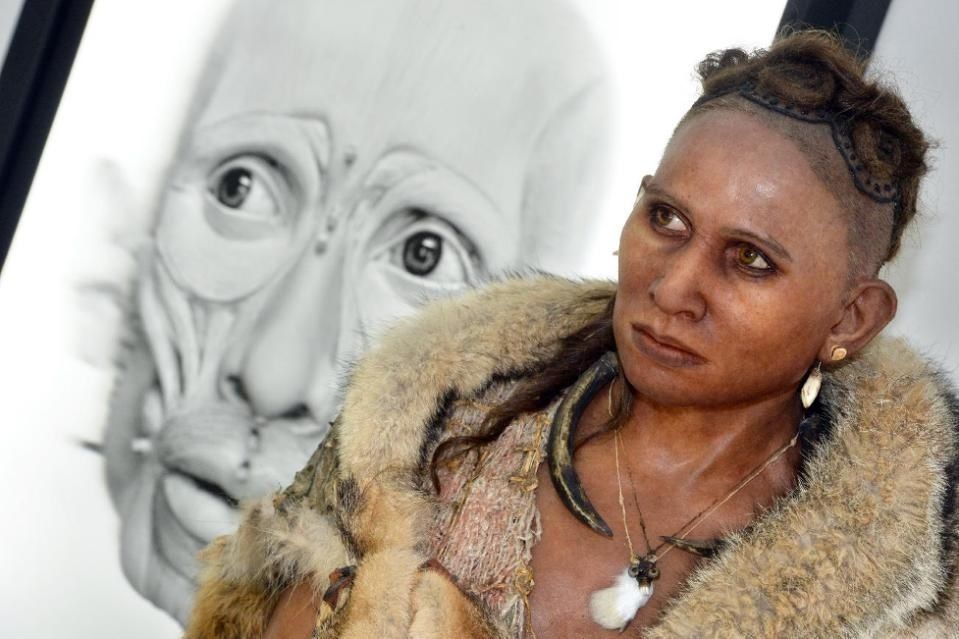Post by UKarchaeology on Aug 6, 2015 17:17:20 GMT

Bordeaux (AFP) - Her clothes are made from fur, hemp and nettle and for decoration she sports ivory and bone beads. She has dark hair worn in dreadlocks, tattoos and a penetrating stare.
Dubbed "the woman from the Pataud shelter", little is known about this figure from prehistory -- except how she might have looked.
Although the dreadlocks and tattoos are pure conjecture, modern scientific techniques mean the facial features of a long-dead person can now be accurately reconstructed.
Former French make-up artist turned palaeontology expert and sculptor Elisabeth Daynes, has painstakingly created a model of Pataud woman.
Believed to have lived around 17,000 years ago in France's southwestern Dordogne region, her skeleton was found there in a rock shelter.
The life-size model is one of two star attractions at an exhibition being held at a Bordeaux gallery entitled "The Origins of Flesh -- our ancestors as you've never seen them before".
The other model has been named "Chancelade Man" and is also based on remains found in the region in 1888.
His reconstructed face appears pensive. He has blue eyes, deeply lined skin and long, thinning grey hair. The skeleton was found beneath the floor of the same Dordogne rock shelter.
Daynes started out as a make-up artist and maker of hyper-realistic theatrical masks at the Theatre du Nord in Lille.
But for 30 years now she has been recreating the faces and bodies of our ancestors from hominid fossils in her studio in eastern Paris.
- Painstakingly recreated -
Likenesses are obtained by the computer modelling of 18 craniometric data points across the skull.
These give detailed pointers to muscle structure and shape of features that define a face such as the nose, chin and forehead.
"My work is done just like a forensic investigation, from casts taken from prehistoric skulls, reconstructed exactly like police composite sketches," she said.
According to Daynes, the sophistication of modern scientific techniques means that many details about an individual who lived many thousands of years ago can now be pieced together simply by having their bones.
The Pataud shelter woman is believed to have died prematurely at around the age of 20.
Daynes, who calls herself the "sculptress of prehistory" has built an international reputation for facial reconstructions which she calls a collaboration between "anthropology, forensic science (and)... art".
One of her first scientific collaborations was with Jean-Noel Vignal, a former head of the Police Forensic Research Institute in Paris, who had developed a computer programme to estimate muscle and skin thickness.
Together they reconstructed a Neanderthal from La Ferrassie, a cave site in France.
Her reconstruction of "Lucy", a famous human-like creature that lived around 3.2 million years ago, meanwhile, stunned visitors to the National Museum of Anthropology and History in Mexico City for its life-like quality.
In 2006, she was also part of a major international project involving teams of scientists and artists from France, the US and Egypt, to reconstruct the face of the Egyptian boy king Tutankhamun.
The Bordeaux exhibition runs until December 5 (2014).
(source/pics at: news.yahoo.com/meet-ancestors-exhibition-reveals-faces-prehistoric-humans-081855766.html )
